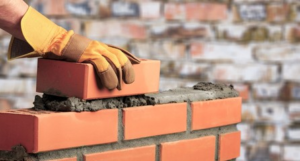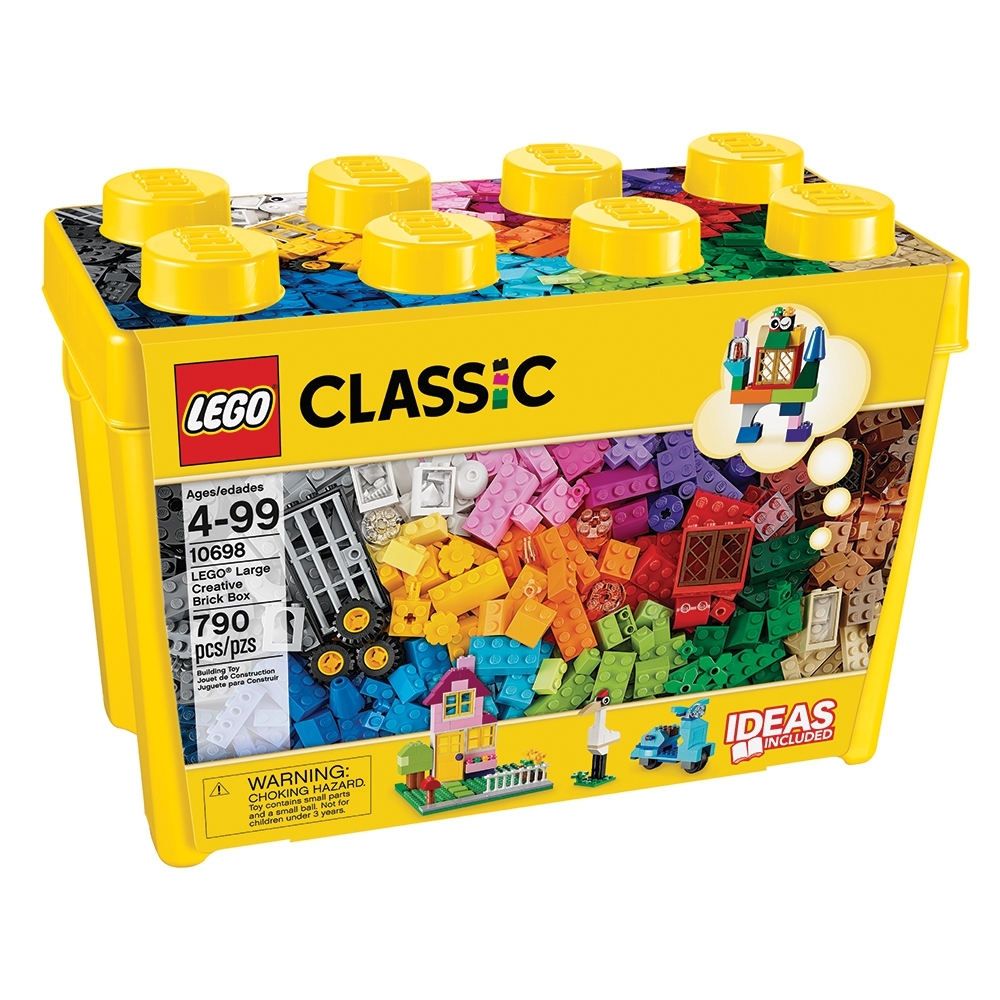Bricklayers use their skills to construct and repair walls, chimneys, foundations, and walkways. They often work with clay bricks and concrete blocks but can also build with other materials, such as marble or terracotta blocks, as long as they are adhered to with mortar.
Bricklayers may be trained through a school program, apprenticeship or on the job training. They must have physical fitness and be able to follow directions for important construction plans. Click Here to learn more.

Bricklayers use their skills to build and repair a variety of structures. They work with clay bricks and concrete blocks in mortar to create and repair walls, partitions, arches and other types of construction. To qualify as a Bricklayer, a high school diploma is normally required, along with some post-secondary education or training and on-the-job experience. Some Bricklayers take a three to four-year apprenticeship program offered by trade unions and other organizations, which includes on-the-job training and technical instruction. Upon completion of the apprenticeship, the Bricklayer is awarded a journeyperson certificate. In addition to specialized training and certification, a Bricklayer must be able to read blueprints and use a wide range of tools.
The first step in laying bricks is to prepare the site. This may involve digging a trench for the foundation of the structure, if necessary. Then, the Bricklayer must mix masonry cement, called mortar, on a tarp or in a wheelbarrow for small projects or in a mixer for larger jobs. This mixture is comprised of three parts sand and one part masonry cement, with water added to the dry materials until they have a consistency like pudding.
When ready to begin the project, the Bricklayer spreads a thin layer of mortar across the ground where the bricks will be laid. Next, they lay the first brick down at one end of the wall, using a tape measure, guideline and level to make sure it is aligned correctly with the other end of the wall. A guidepost is also often used, which are long wooden boards driven into the ground at either end of the structure with markings to indicate the correct height of each course of brick.
For the next row, the Bricklayer butters a side of each brick with mortar before placing it in place against the previous brick. Then they check the straightness of the row with the guideline and level again. Once the bottom row is complete, the Bricklayer moves the guideline up to the next marker and repeats the process of measuring, buttering and pressing each brick into place until the entire second row, or course, is completed.
Bricklayers spend a lot of time high up on ladders and scaffolding. So, they need to have a good head for heights and be vigilant about safety awareness. In addition, they must have the ability to work in noisy or dusty conditions. Many bricklayers work abroad, for example in the Middle East and Australia, and therefore have to be prepared for travel.
Scaffolding is a system of horizontal and vertical tubes that is used to support workers while they are working at height. Often, it is constructed from tubular pipe frames that can be assembled in different ways to accommodate the needs of each construction project. It is commonly used in residential and commercial construction projects.
A bricklayer will use a variety of tools to construct the scaffolding, including a hammer, trowel, pliers, and a power drill. He may also need to cut and shape the materials he uses for the scaffolding. While factory-produced bricks are relatively uniform on all sides, salvaged bricks or bricks cut from existing buildings may be misshapen and require the bricklayer to use a chisel or brick cutter to achieve an even finish.
The most common form of scaffolding is the tube and board system. This type of scaffolding consists of a row of standards that are fixed to the wall and a series of ledgers that connect the standards to each other. It is also possible to use double scaffolding, which has two rows of standards. This is often used in stone masonry applications.
Another type of scaffolding is the frame and putlog system, which is more stable than the tube and board system. This type of system consists of a row of horizontal tubes that are attached to the wall by a putlog or ledger. The tubes are joined together using couplers, which are metal fittings. Right-angle couplers join ledgers and transoms to the standards, and swivel couplers are used to connect tubes at any angle.
In some cases, it is possible to use a sloping catch fan to protect people below the scaffold. This can be erected at ground level or at specific points on the structure and contains a receptacle for fallen debris.
Brickwork can deteriorate over time, and even though the material is long-lasting, it requires proper care to prevent moisture from seeping into the walls and cracking them. Fortunately, a bricklayer has the tools and knowledge to repair brick wall damage and prevent further decay.
Brick walls are constructed from a variety of materials, including clay, stone and concrete. They are often bonded together with mortar, and the mortar helps to prevent water infiltration and keep the structure intact. Bricks and masonry are durable, but the mortar that holds them together can become damaged over time. A bricklayer can use several methods to repair deteriorating or damaged mortar, but the best method depends on the type of repair required.
Most brick damage is cosmetic, and a bricklayer can easily fix it by applying a fresh coat of mortar. However, some repairs require more extensive work, such as replacing old or missing bricks or rebuilding a section of a chimney or foundation.
When repairing brickwork, a bricklayer should always follow a step-by-step procedure to ensure quality and safety. Masonry can be dangerous for several reasons, including the fact that stone dust lodges in lungs, and bricks are heavy, making lifting and moving them difficult. In addition, working with masonry can be hazardous for the eye and ear, especially when it involves removing bricks high on the wall.
In order to repair a brick wall, the first step is to clean out the area and remove any old or damaged mortar. This is done by using a raking bar to scrape off the mortar down to 2 centimeters below the surface. After the mortar is removed, the bricklayer can then use a tool called a joint striker to tool the new mortar joints so that they match the existing ones. After the new mortar is applied, the bricklayer must spray the entire area with water to help it cure and set.
Once the mortar is fully cured, the bricklayer must apply a coating of protective sealant over it to keep moisture out. This is especially important in damp areas, where a brick wall can be particularly vulnerable. If a brick wall is exposed to rain or snow, the contractor must also protect it from the elements by installing gutters and downspouts.
A bricklayer must have the right tools in order to do their job. They should invest in hand tools like bolsters and trowels, as well as power construction tools such as mixers that are used to prep adhesive building materials like mortar for use. Additionally, bricklayers will need other tools for laying bricks, such as drills. Having the right equipment can help make it easier to complete projects and deliver quality work that is sure to impress.
One of the most important tools a bricklayer will use is a spirit level, which can be used to ensure that they are constructing walls that are even. This is vital to ensure that a structure will stand up to the elements and not become damaged over time.
Other essential hand tools for bricklayers include a lump hammer, a scutch hammer and a pointing tool. A lump hammer is a heavy hammer that is used to cut bricks by striking them with it. A scutch hammer is used to chip off bits of brick and is useful for demolition work. A pointing tool is a smaller trowel that is used to finish off brickwork by shaping the mortar neatly inside the brick joints.
In addition to these tools, a bricklayer will also need other supplies, such as safety goggles and a dust mask. Using a dust mask is important because it protects the eyes from any debris that might be kicked up when cutting and mixing materials such as cement. A bricklayer should also have a tarpaulin handy to cover the ground when not working, and a tape measure will be useful for taking accurate measurements.
Lastly, a soft brush is another must-have tool for a bricklayer. This tool is used to remove any excess mortar after pointing brickwork, and it can be used to create different finishing designs in a brick wall. It is important that a bricklayer uses this tool carefully so that they do not damage the surface of the bricks. It is also important to keep a clean workspace to prevent accidents while working on the project.
